Walk ten minutes from the burnt out site of the Grenfell Tower block, still smouldering nearly two days after the blaze that devastated the 24-storey building, and you will find yourself in a completely different world. BMWs, Jaguars and Audis are parked along the tree-lined streets of Clarendon Road, Blenheim Crescent and Elgin Crescent. The four storey town houses are freshly painted and builders are carrying out extensive renovation works on some of the multi-million pound properties.
Wander through the footpath that connects nearby Walmer Road and Clarendon Road and you will see a completely different aftermath to the horror wrought on Monday night. On Walmer Road, crowds of volunteers and donations block the road near the Rugby Portobello Trust centre, yet on the road that runs parallel, it is calm and quiet - two worlds, living side by side.
The tale of Grenfell Tower is a tale of two Kensingtons. It is the story of how scores of people were left to perish in what is being described as a block riddled with fire and safety problems and disrepair, just metres away from some of the wealthiest streets in the country.
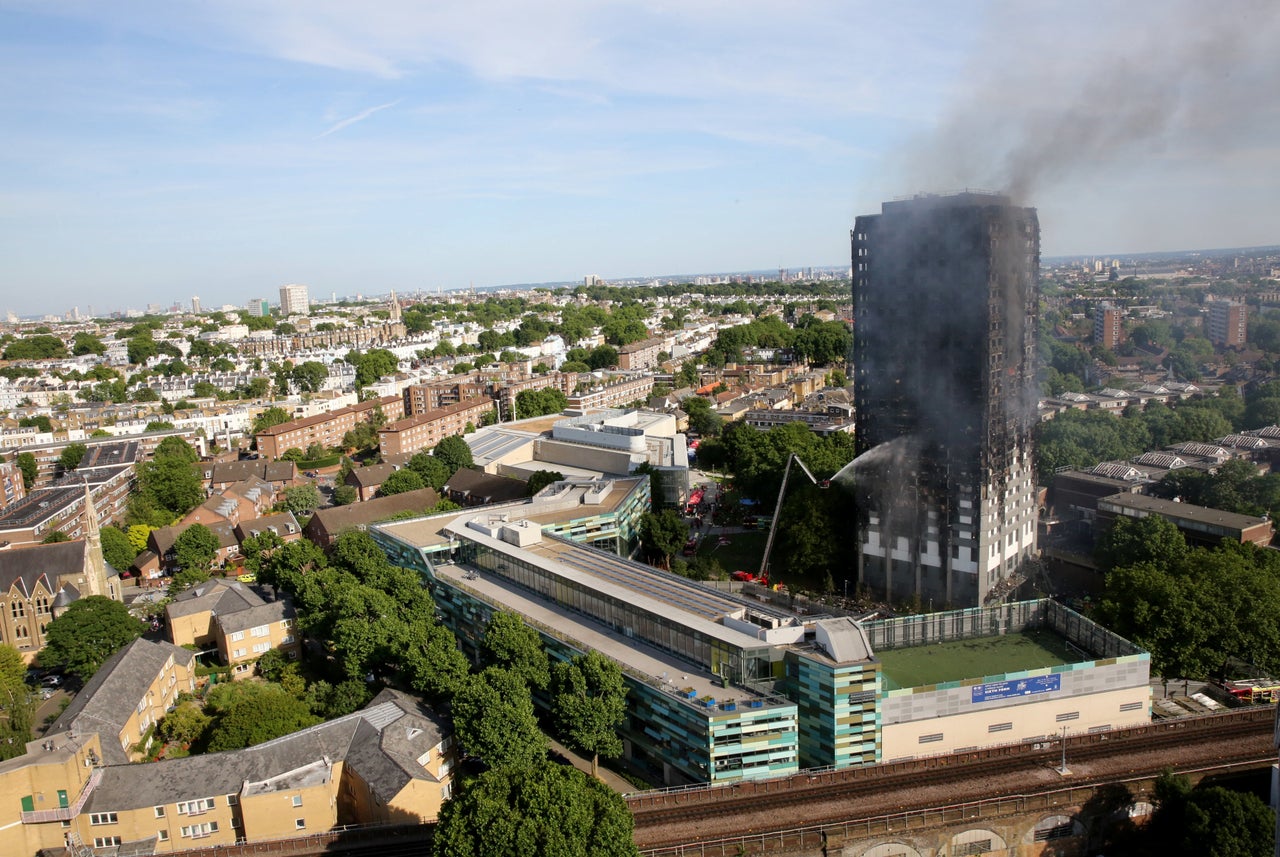
“[Visually] there’s no comparison, you’ve got a Rolls Royce to your right and the slum to the left. It’s not a good contrast. There’s half a road separating the wealth and the poverty,” James Sheridan tells HuffPost UK.
Sheridan, a 28-year-old chef who works in the area, is one of hundreds of people volunteering his time for the relief effort.
Data shows how the tower’s residents were surrounded by inequality, with marked differences in their income, employment and life expectancy when compared to those living just metres away.
A patchwork map of inequality shows the area immediately around the building, in the wealthy borough of Kensington and Chelsea, to be among the most deprived in the whole of England in 2015.
On measures including levels of income, deprivation, and barriers to housing and services, people living in Grenfell Tower and its immediate surroundings had worse prospects than those living just eight minutes walk away.
“On one side you have all the rich people and their houses are being developed and on the other side you have the social housing which hasn’t been developed for a long time,” Azar Hussain, who lives nearby Grenfell Tower and knows people missing inside, tells HuffPost UK.
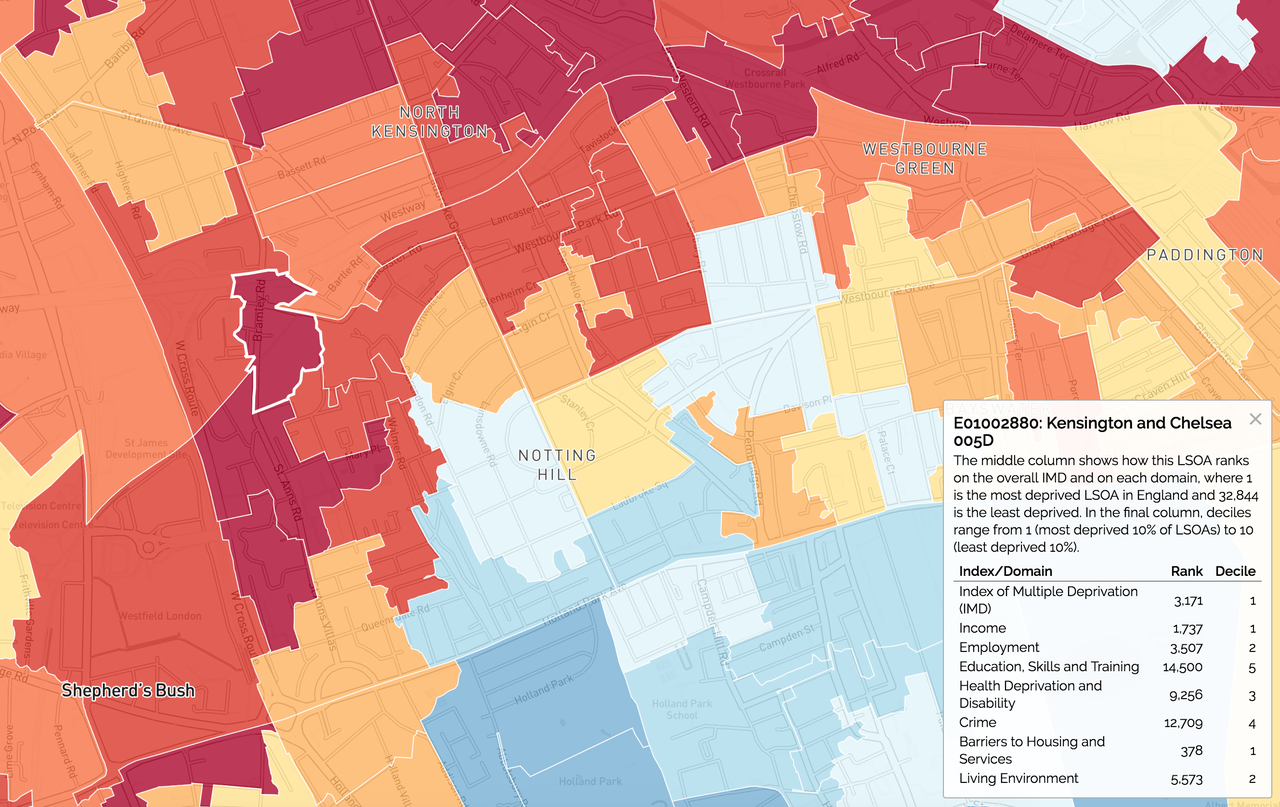
The map, above, shows Grenfell’s locality, highlighted, as being dark red - indicating the most deprivation. Meanwhile neighbourhoods just streets away are marked blue - indicating areas that are the “least deprived”.
The data was drawn from the Government’s English Indices of Deprivation 2015 and compiled into a coloured map by coder James Trimble.
The view, below, shows the coloured map approximately overlaid onto an aerial view of Grenfell Tower - revealing the stark contrasts of inequality in between the north of the borough and elsewhere.
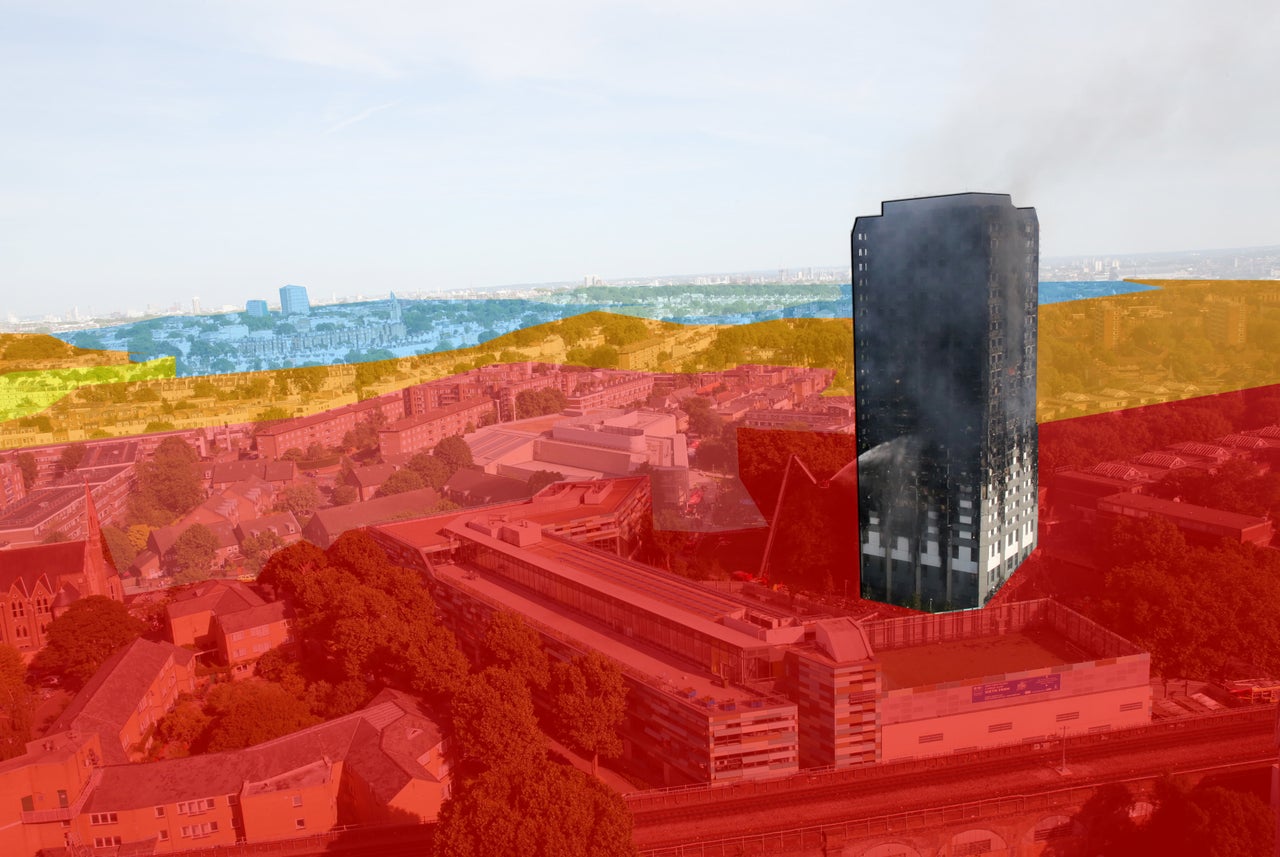
Click here for a zoomable version
And the 2015 data also reveals Grenfell Tower and its surrounding area was:
- In the most deprived 20% of areas in England for employment and living environment
- In the most deprived 30% for health deprivation and disability
- In the most deprived 40% for crime
Yet the nearby Notting Hill area, just a eight minutes walk from Grenfell, was found to be:
- In the least deprived 10% of areas in England for education, skills and training
- In the least deprived 10% for health deprivation and disability
- In the least deprived 20% for employment
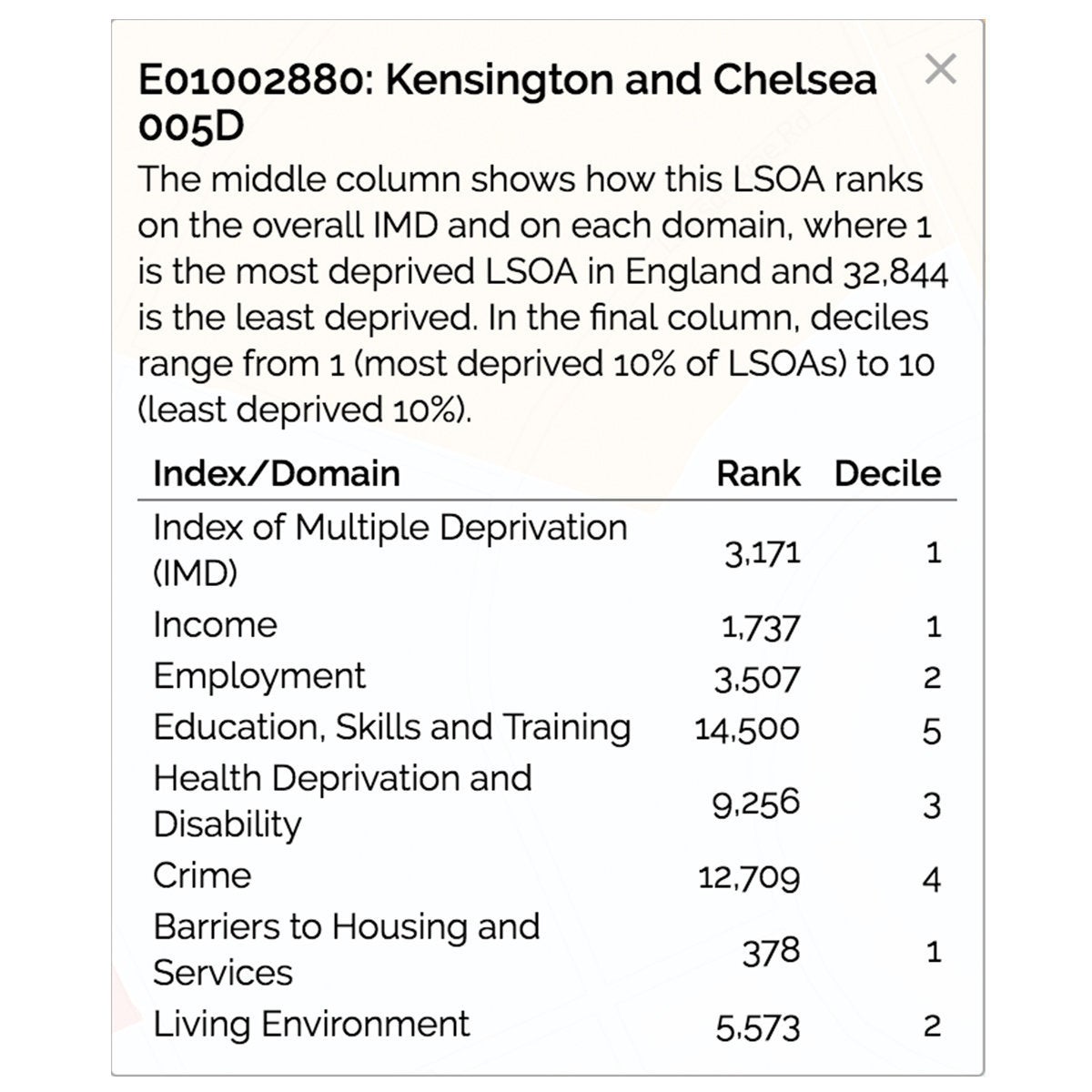
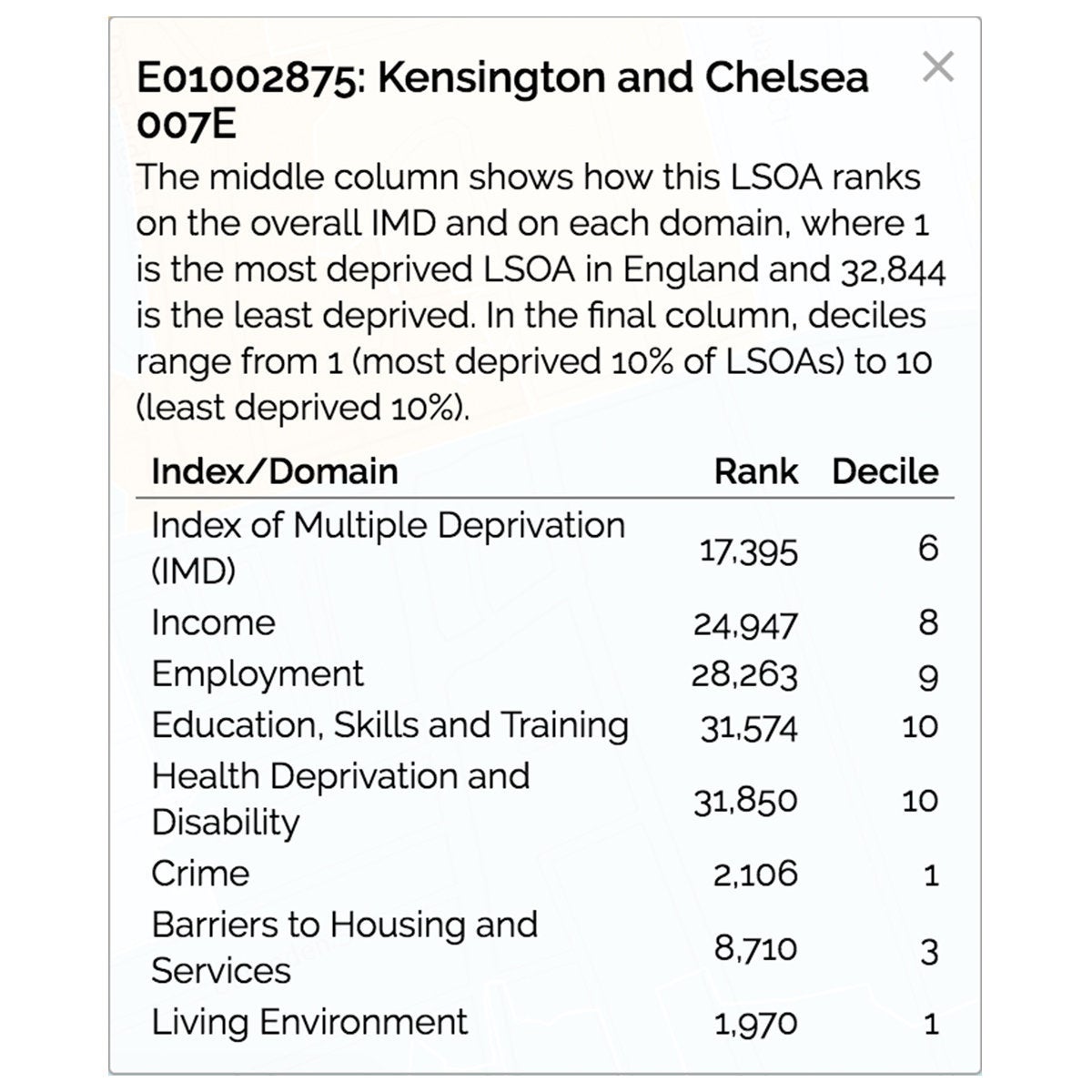
Local residents and workers say there is a physical, as well as financial, divide in the area, with the Lancaster West Estate encapsulated by metal gating.
“I do feel that poor people have been gated off from the wealthier side,” local chef Sheridan says. “It’s clearly there in black and white that they are living in a different world to us.”
He says the two living situations are “like chalk and cheese”.
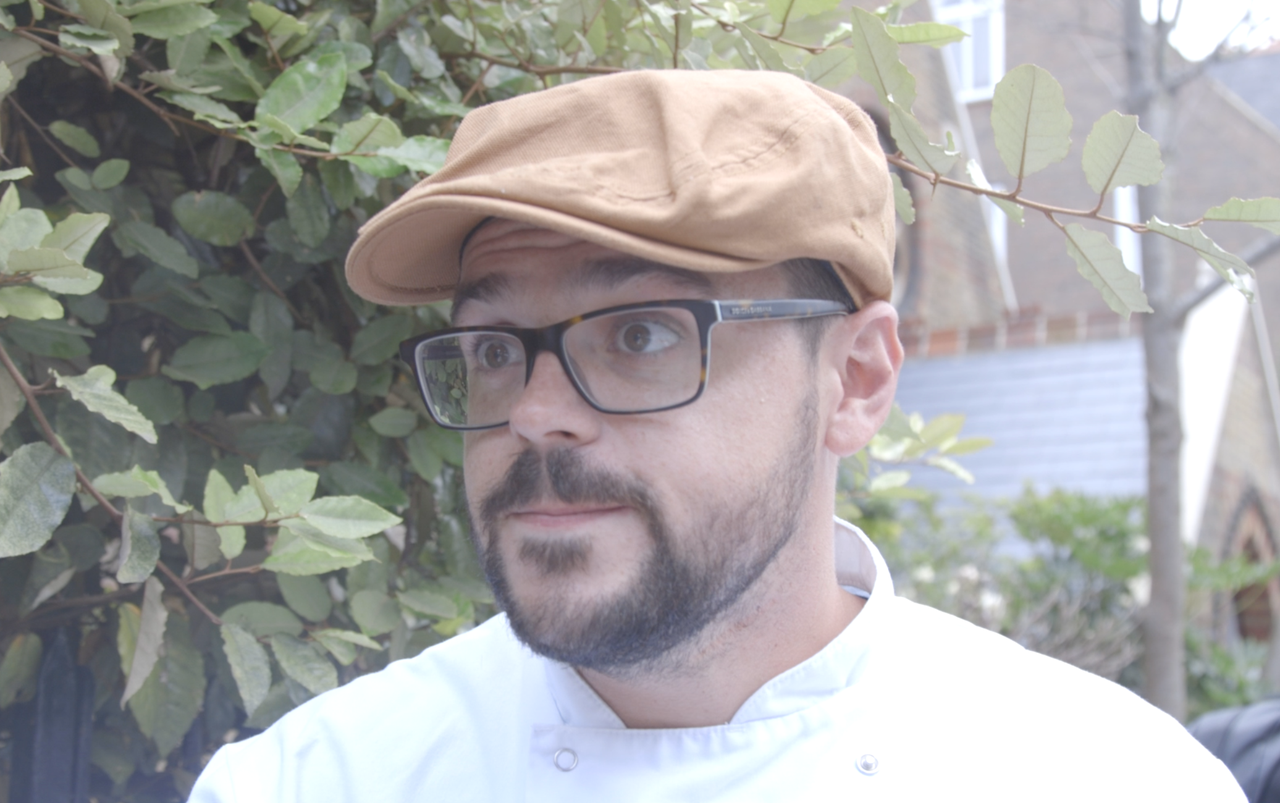
While properties in Kensington and Chelsea go for, on average, for £1.4m, flats in Grenfell Tower have been marketed for £250,000 in recent years.
“There is a divide between the rich and poor,” market researcher Hussain adds. “You have the social housing on the one side and on the other side you have the private residential housing. So you can see the contrast in the people, because the people in the social housing, they are just about living. They’re struggling a lot.”
Inequality was the top of newly-elected local Labour MP Emma Dent Coad’s agenda upon her shock victory last week.
Dent Coad told the Guardian before the tragedy: “We have areas of extreme poverty. People are getting poorer, their income is dropping, life expectancy is dropping and their health is getting worse.... there is no trickle down anywhere in Kensington.”
One resident, who only wants to be identified as Kim, says she is happy the borough finally has a Labour MP, as previous Tory MPs were “always for the rich people”.
The Lancaster West Estate resident says the buildings are “infested” with leaks, damp, cockroaches and ants.
She explains: “We live on a council estate, we don’t live on a private residence,” adding: “They [the council] don’t care about you.”
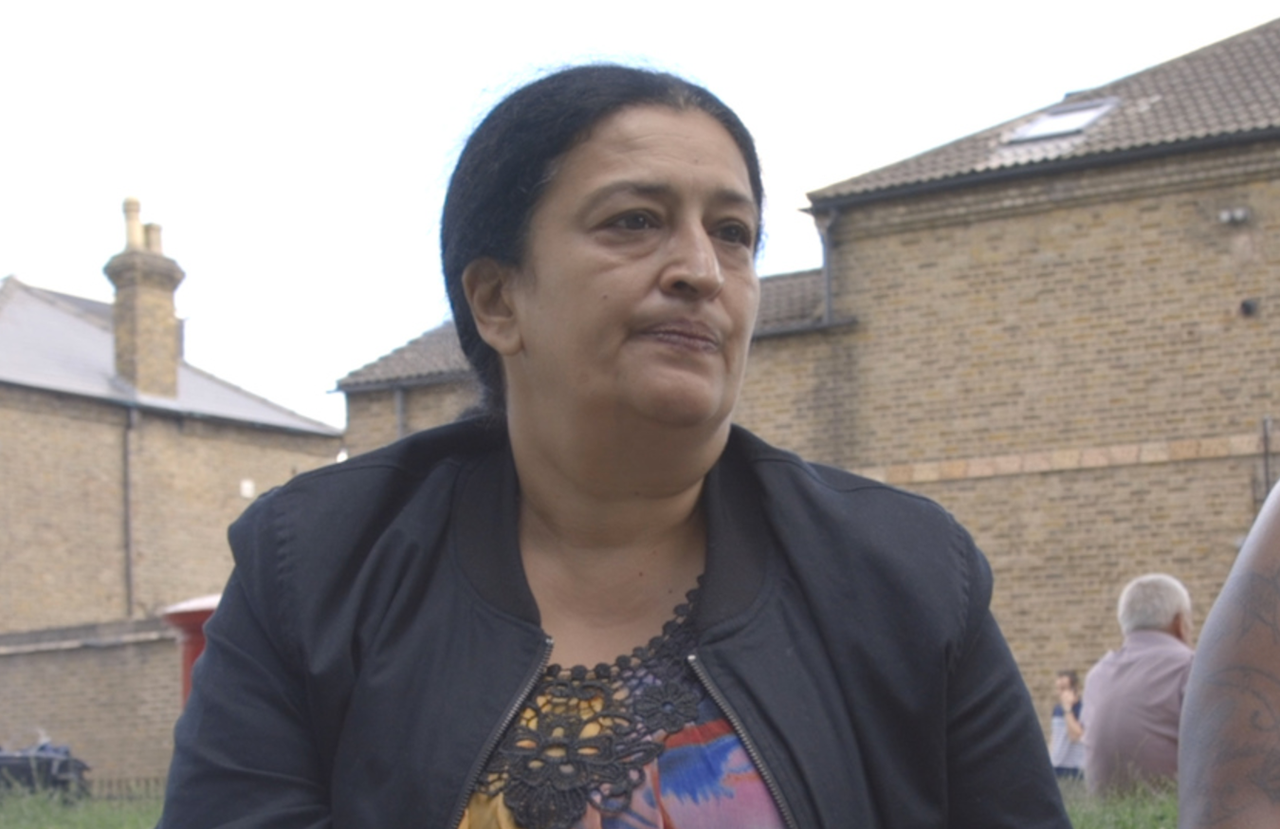
And explaining why stark contrasts between streets exist, Mubin Haq, director of policy at Trust for London tells HuffPost UK: “We’ve seen in places like Kensington and Chelsea that the ‘middle’ has been squeezed out so you’re left with the poor and the rich and that explains the extremes you find there.
“We have areas of extreme poverty”
- Emma Dent Coad, Labour MP for Kensington
“Generally people are living in more overcrowded conditions if you are poorer, and they don’t have the same access to potential services like good medical facilities. It’s too early to tell the reasons behind what’s happened but the lives people are leading are quite different for poorer people living in London.
“When you see the real stark differences I think there is a question over looking at your own life and trying to figure out ‘why do I not have the same access to resources as some of these other people’. It must be very tough for people living beside those types of extremes. We definitely have that in Kensington.
“There is research into the impact this has on mental health and wellbeing. Children won’t go to the same schools.”
Residents have vented their anger at inequality in the area in the aftermath of Wednesday’s fire, with one local suggesting “regeneration” of the area had simply “contained” those who live there.
“People are living in more overcrowded conditions if you are poorer”
- Mubin Haq, Trust for London
A resident told HuffPost UK on Wednesday: “You can’t apply to Holland Park [School] anymore, you can’t apply to wherever any more, so it’s contained. Ethnic cleansing and social cleansing, bottom line, full stop, in my opinion.
She added: “That’s what it is. It all comes down to money. We’re all in Kensington and Chelsea, we can’t get away from that.”
Akala, an award-winning artist who lives nearby, told Channel 4 News: “The people who died and lost their homes this happened to them because they are poor. We are in one of the richest spaces, not just in London but in the world. Repeated requests were ignored.
“There is no way that rich people would live in that building without adequate fire safety. Everyone I’ve spoken to has said they couldn’t hear alarms, there was no sprinkler system.”
Journalist Skyler Baker-Jordan added in a blog on HuffPost UK today: “The fact is, Grenfell Tower - from the residents’ years of documented complaints about safety to the fact is lies in the richest borough in London - is a stark reminder of whose voices get listened to in modern Britain, whose don’t, and that this dichotomy can have deadly consequences.”
